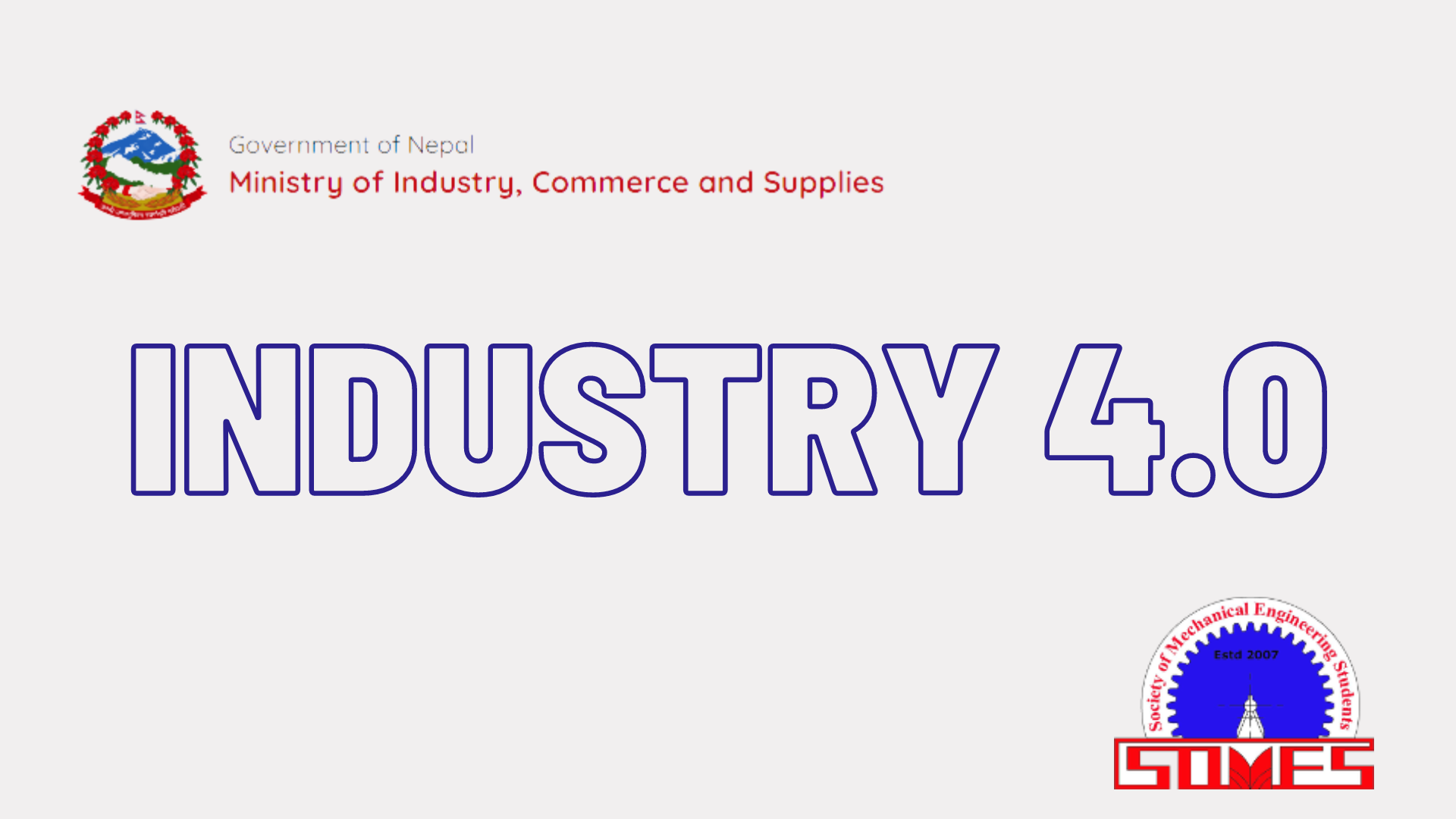Collaborating with the Ministry of Industry, Commerce, and Supplies, SOMES (Society of Mechanical and Aerospace Engineering Students) conducted a program on “Industry 4.0” on Pulchowk Campus on Friday. With the Deputy HoD of Thapathali Campus, Sushant Raj Giri as the main speaker, the program focused on educating students on the Fourth industrial revolution; its effects, and opportunities in Nepal. JB Consultancy provided the required expertise and funding for the event.
After three prior industrial revolutions each in the 18th, 19th, and 20th centuries respectively, the arrival of the 21st gave rise to a fourth one. Industry 4.0 focuses on evolving automated machines into autonomous ones, the difference being that autonomous machines are self-learning and utterly independent of humans. In contrast, automated ones need humans to set them up. The major components of Industry 4.0 are AI, machine learning, smart sensors, cloud computing, and IoT(Internet of Things). With remote surveillance through cloud computing, assessing the market needs through deep learning algorithms, and fault prognosis of machine components through health monitoring sensors, Industry 4.0 promises a higher production rate, better efficiency, and product optimization.
Most of Nepal’s educated and skilled manpower in the industry sector either stagnate through long unemployment periods, settle for a job unrelated to their core competency or flee abroad in search of a better opportunity. Industry 4.0 can help to fill the gap between the availability and demand of such skilled manpower.
The Ministry of Industry, Commerce, and Supplies aims to implement Industry 4.0 in Nepal’s agricultural sector first. To boost production rates and cut off the middlemen who cause price hikes, by directly connecting farmers and consumers, Industry 4.0 can help build an optimized Nepali agriculture market.
The rise of autonomy has started to sprout in Nepal and its industries, among which Hongshi Cement seems to have a better understanding and application of the concept in comparison to its fellow Nepali counterparts. To compete with the global market production and product optimization trend and to have its citizens working in state-of-the-art technology industries, Nepal needs to comprehend, incorporate and implement “Industry 4.0” within its industries.

